I’ve gotta give it to Wizards, Vintage Masters is awesome. While the Masters Edition sets served their purpose of getting old cards into the system, drafting often felt archaic and forced. A lot of the cards were really bad, and it just wasn’t a whole lot of fun. Vintage Masters, on the other hand, is an extremely deep and interesting draft format with tons of powerful cards and many interesting choices to be made both during the draft and during the gameplay itself.
I’ve done about twenty Vintage Masters drafts over the last few weeks, and I have done very well with a huge variety of different strategies. Today we are going to look at some of the major things to consider when drafting Vintage Masters and how it is a bit different than a normal draft format.
Vintage Masters feels like a very interesting mix between a normal draft format and a Cube draft. There are a few reasons for this, and they are instrumental in understanding the format as a whole.
You must draft decks, not cards.
Much like in a cube draft, you can’t just take the best card in your colors every pack and hope to end up with a really good deck. One of the things that makes both Cube drafting and Vintage Masters drafting so enjoyable is how important synergy is. Very often you are going to ask yourself “is this card good?” and the answer is very often going to be “maybe yes, maybe no.”
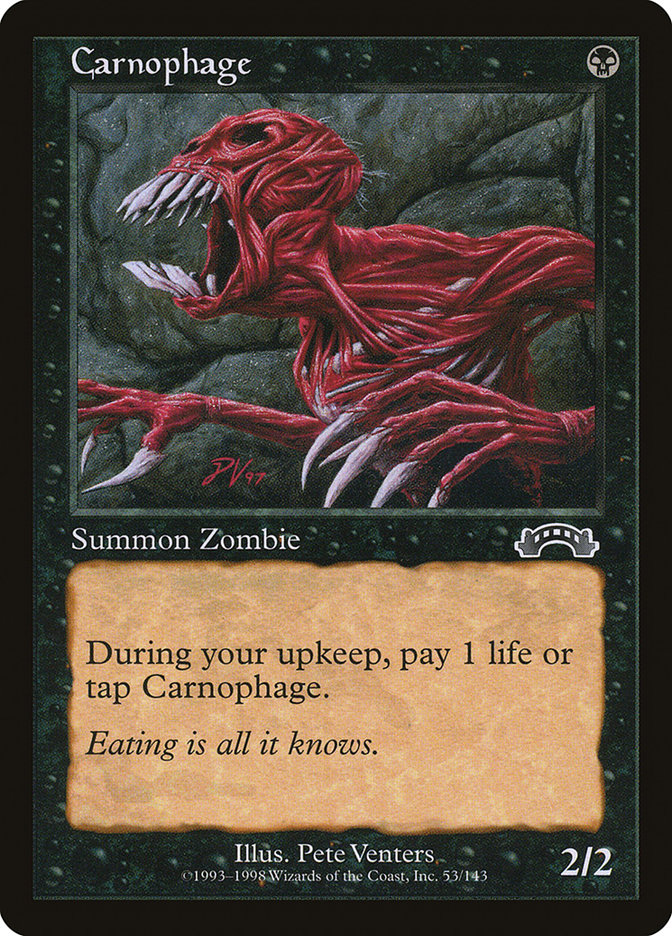
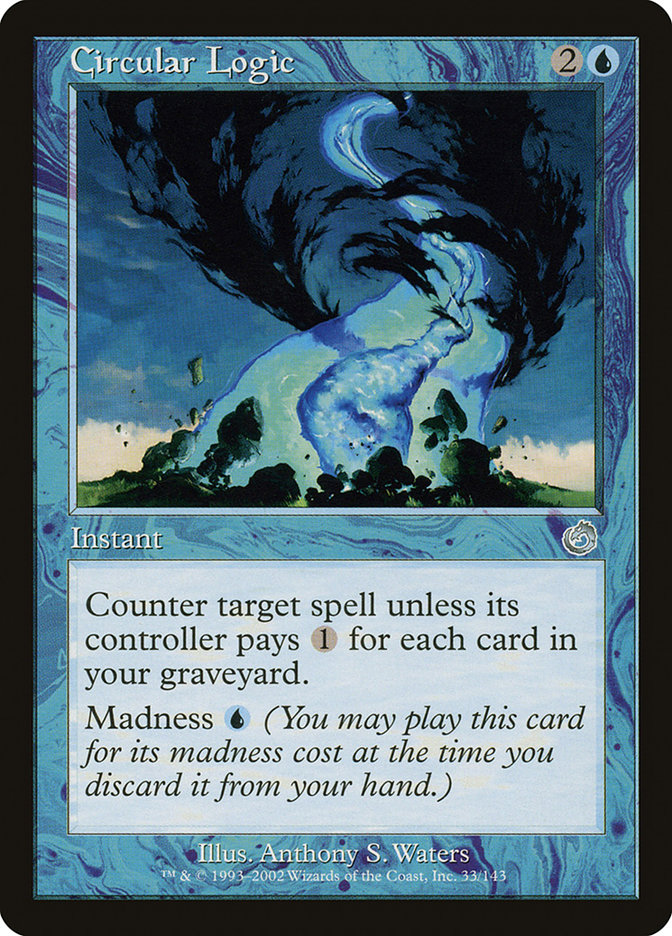
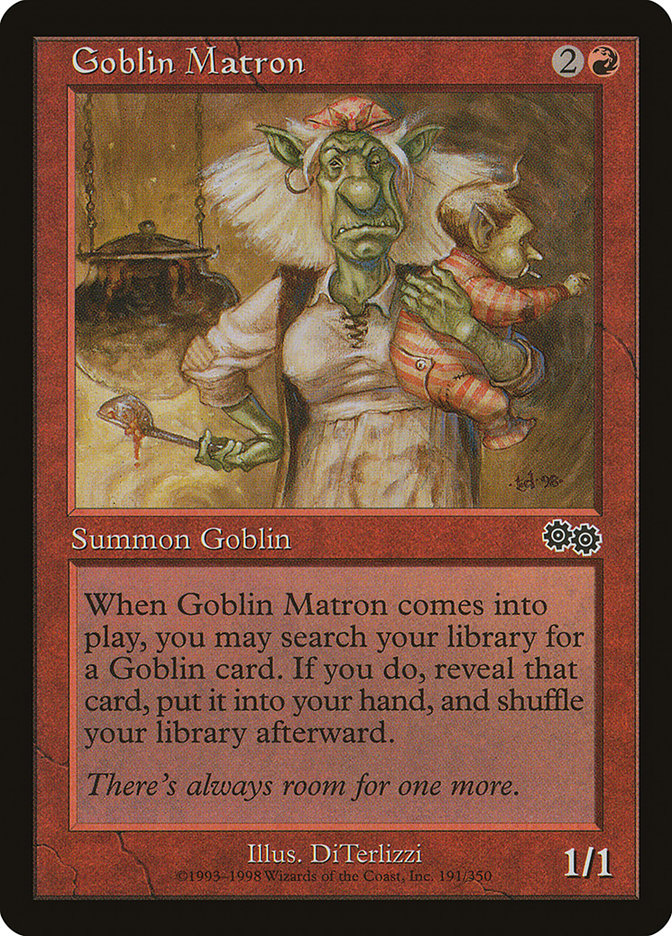
While of course there are your slam-dunk picks like Swords to Plowshares and Flametongue Kavu, for the most part you really need to ask yourself “does my deck want this card? What is my plan?”
Is your deck very aggressive, and if so, can it make good use of disruption like Mesmeric Fiend and removal like Expunge? Then cards like Carnophage are going to be extremely important to your strategy, while some other black decks wouldn’t even consider playing them.
Is your deck able to somewhat reliably activate Madness, and if not are you in the market for a situational three-mana counterspell? The quality of a card like Circular Logic in your deck can easily range from one of your best cards to “barely playable.”
Is your deck full of Goblins? Some cards are so synergy-based they literally don’t even do anything without having some other synergistic cards to go with them. Without good targets like Beetleback Chief or Goblin Warcheif, Goblin Matron is an overcosted 1/1.
This means you are going to be put in a lot of strange scenarios while drafting. You may have a good aggressive R/B deck in the works and find that you have to take a Carnophage over an Expunge because you already have removal but are lacking the early pressure to make your Reckless Charges and Tyrant’s Choices good.
As a result, it is of the utmost importance for you to be as reactive and flexible as you possibly can as the draft goes on. Many times you are going to find yourself taking cards which are ‘less powerful’ in a vacuum, but which end up being the correct picks for your deck.
The power level is much higher than average.
It seems pretty obvious that a highlight-reel type set will keep the power level very high. Not only is it filled with tournament staples from much of Magic’s history, but a lot of the rarities have also been adjusted down.
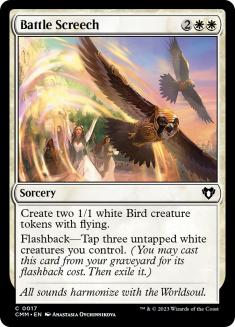
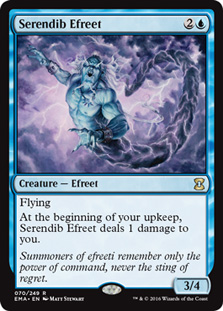
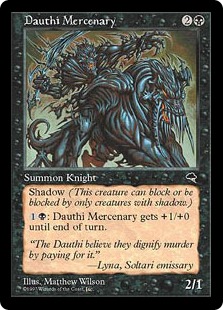
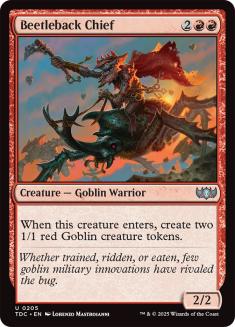
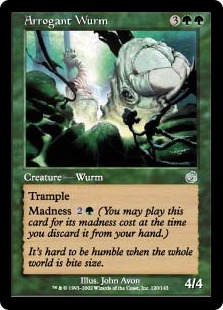
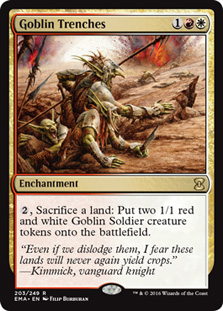
While a few cards were shifted up to uncommon or rare, the majority of rarity changes in the set are down — from uncommon to common or rare to uncommon. This means that the average power level of the set really is just through the roof. It’s not uncommon to play against a deck that is going to have three copies of Battle Screech or Arrogant Wurm, or doubles of Radiant Archangel or Dark Hatchling.
Because of this, it is very important to understand the relative power level of the cards in the set.
Many cards that were playable in other draft formats are almost unplayable.
There are very few actual unplayable cards in the set, and because of that the relative power level of the entire set simply creates its own unplayables. Many cards that have been fine cards in other draft formats are pretty much unplayable in this one because they don’t really have a place or do anything special.
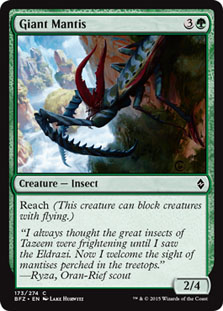
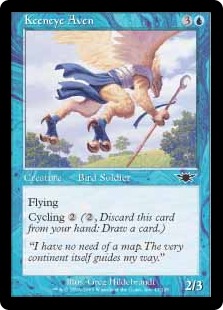
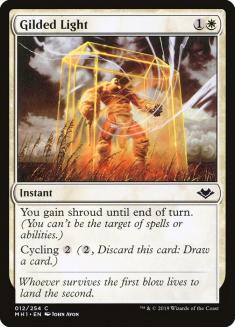
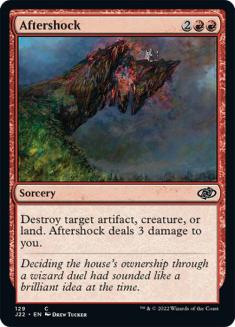
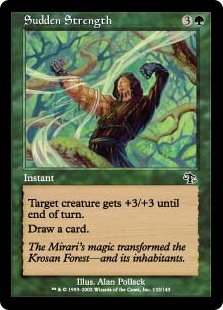
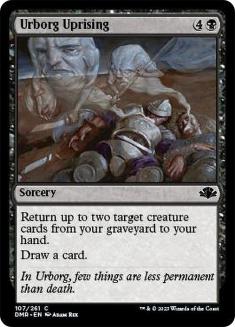
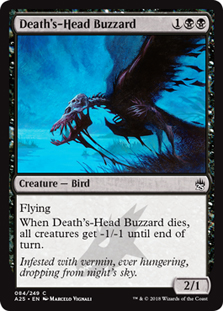
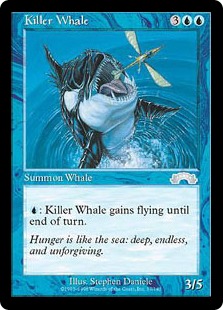
While these cards aren’t Chimney Imp awful, they are overcosted and underpowered compared to what many of the other cards in the format are able to do. Most importantly however, is that they don’t add anything to your deck.
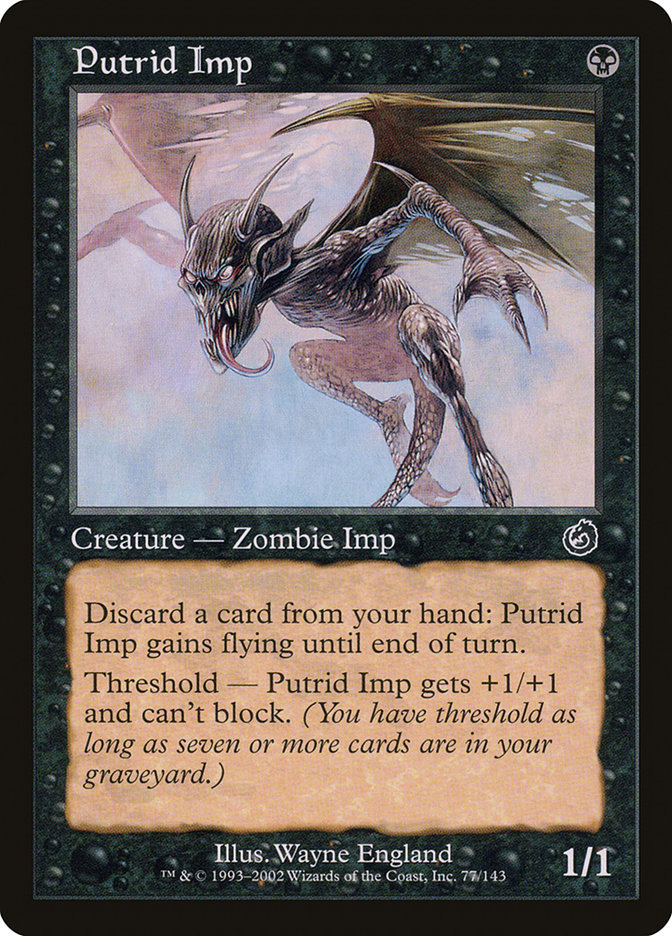
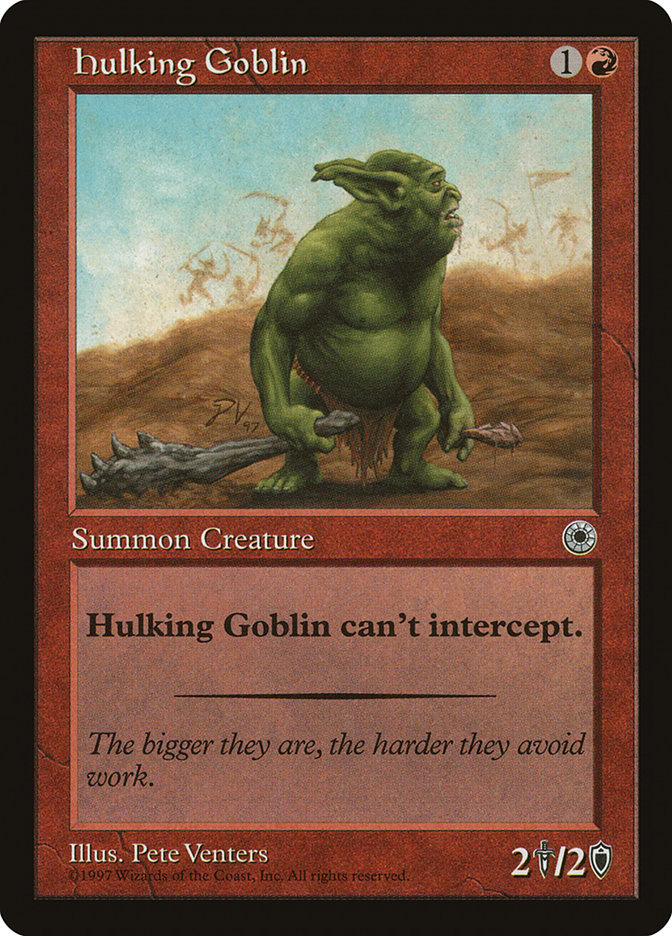
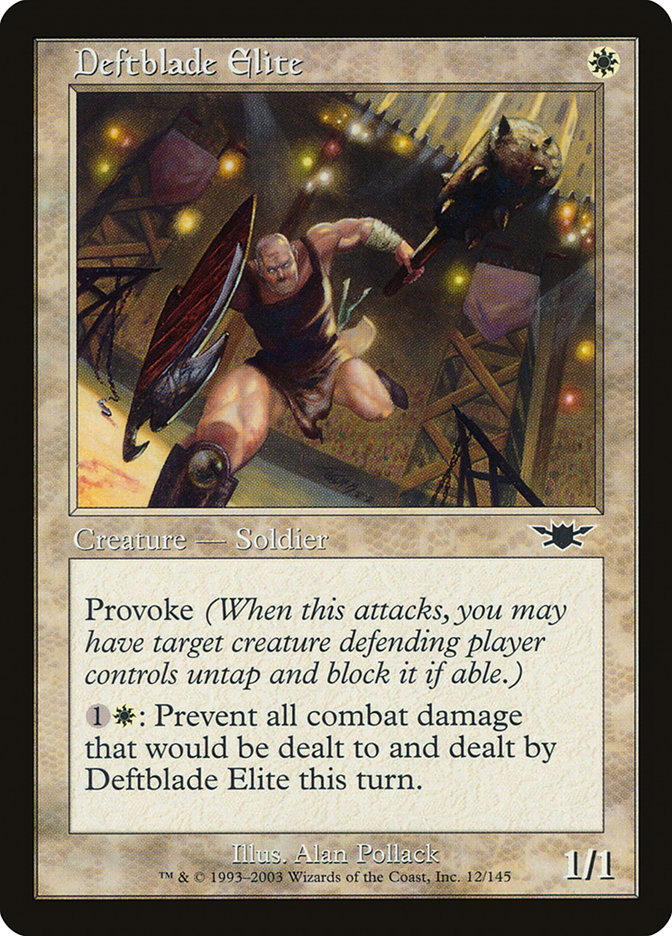
While some cards like Putrid Imp, Hulking Goblin, and Deftblade Elite seem weaker that the above-listed cards in a vacuum, they do something for the decks that actually want them. Maybe you need another Madness enabler or to increase your Goblin count – while they aren’t flashy, they do help you accomplish that task.
In your first draft or two, you are probably going to feel like your deck is insane because you have thirty playables; that is, until you realize that many of those late picks aren’t really that playable at all.
The best way to figure this out is to ask yourself “what job is this card accomplishing in my deck? What is my plan?” If you have a good answer, you’re set.
Archetypes
I’m about twenty drafts in so far, and Vintage Masters has proven to be a very deep draft format. There are all sorts of really awesome and fun things you can do, and they did a great job of making sure each color has solid themes and synergies with a lot of crossover.
Let’s check out some of my more successful decks.
R/W Slide – 3-0
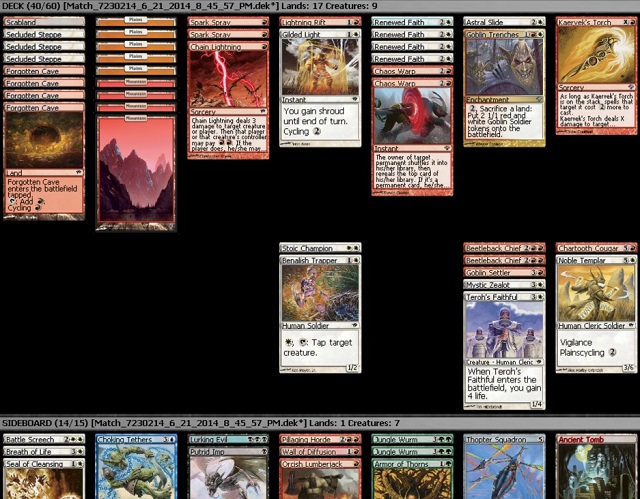
I’ve been a few Lightning Rift/Astral Slide decks (including a few curveballs like the Goblin/Cycling hybrid deck seen last article), and they have been extremely potent. Because neither Lightning Rift nor Astral Slide do much unless you go all-in on them, you can hopefully pick them up later in the draft… but it’s always good to start with one so you at least have a good foundation for the deck.
In this draft I was able to pick up an amazing seven cycling lands, along with nine other cycling cards which really made the deck hum.
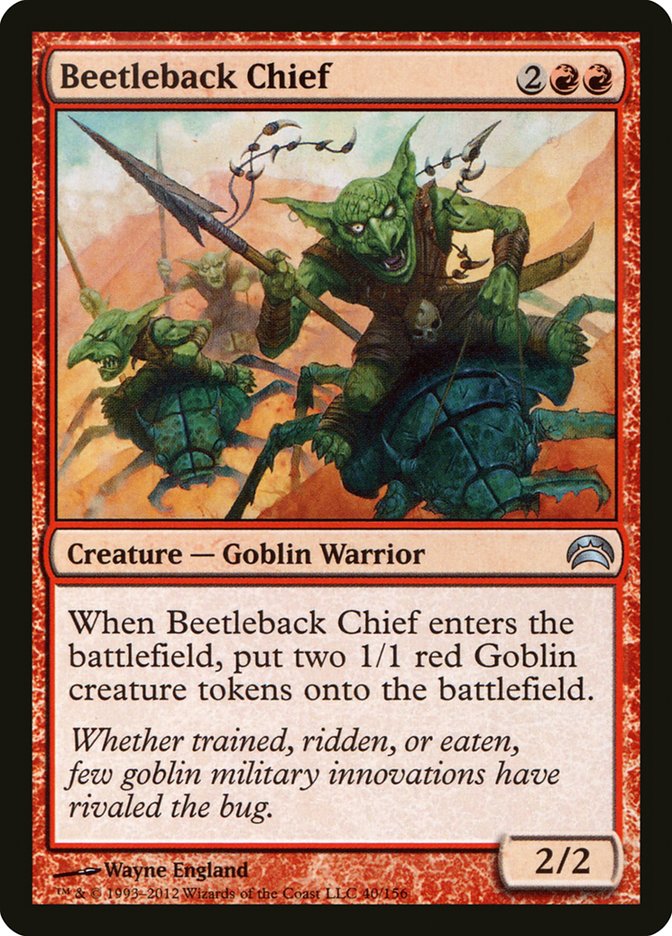
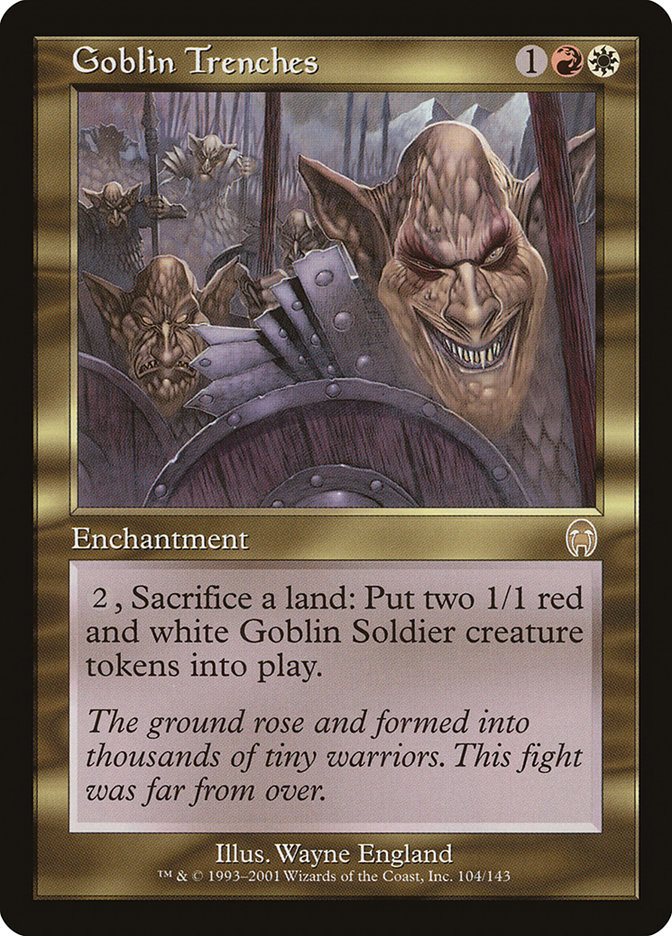
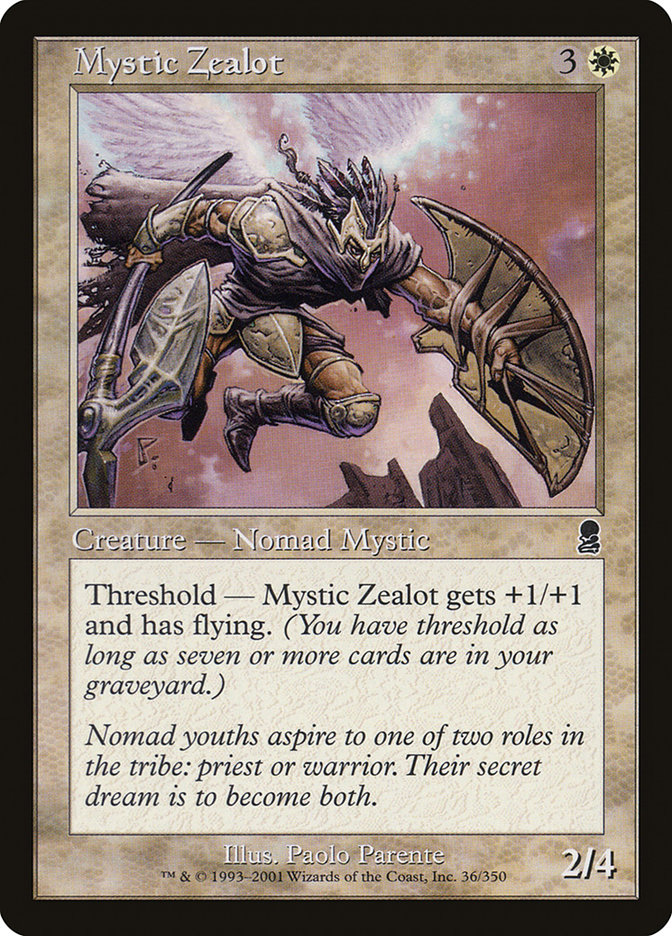
For win conditions, I borrowed Beetleback Chief from the Goblin players at the table and was able to Slide him out many times for a bunch of guys, which was backed up by Goblin Trenches. Mystic Zealot was fantastic given how fast I could fill up my graveyard with cyclers. This is definitely a control deck, and it is important to prioritize your finishers. It is also important to prioritize your cyclers; you would much rather have a cycling land than some mediocre card you don’t even want to play.
U/G Ramp – 2-1
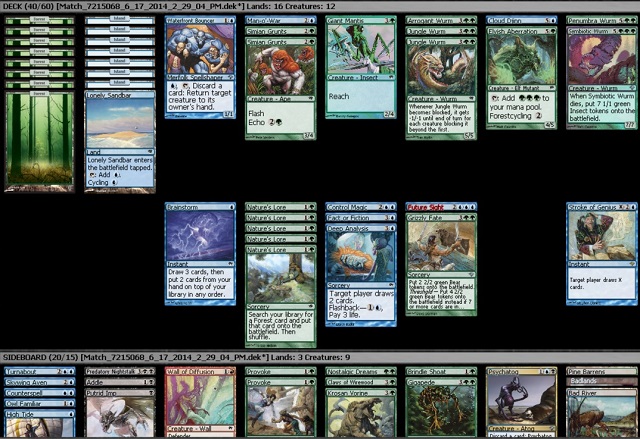
This was one of my first drafts, and the deck was fairly straightforward; make a bunch of mana, draw a bunch of cards, and play a bunch of big guys.

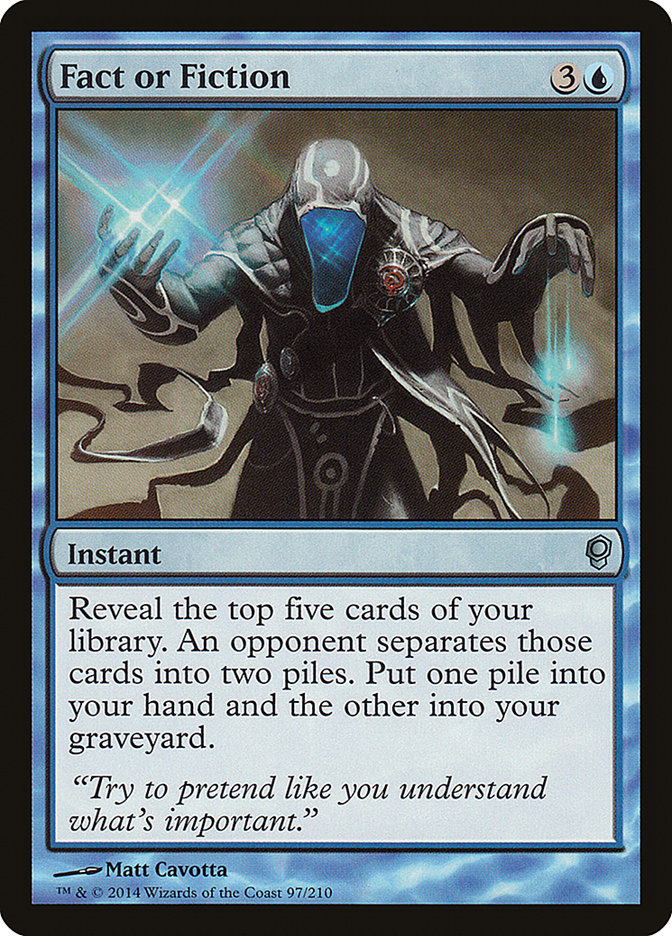
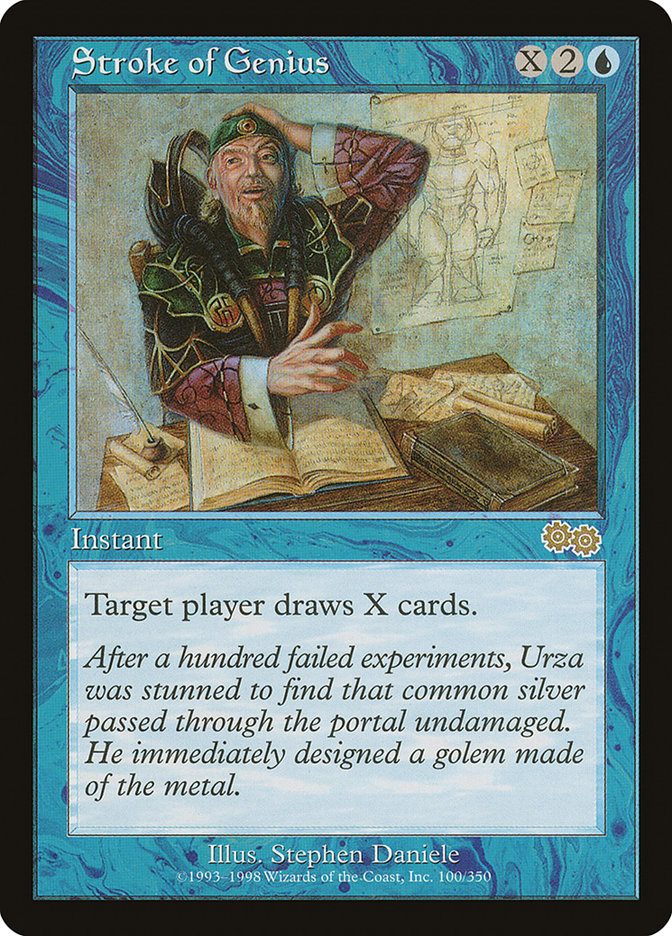
The power level of the spells in the format is very clearly on display here, as my card draw suite is almost at a Legacy power level. Despite playing five Rampant Growth effects, I was never pressed for gas as I was able to outdraw my opponents at an obscene pace.
A few individual card notes: Man-O’-War and Waterfront Bouncer are amazing tempo cards, and an active Bouncer is quite hard to beat. Simian Grunts is good, but not as amazing as it would first seem. Anyone who has played the format enough will be wary to attack into three mana (especially if you have white mana as Exile is also a common), which really dampers the card’s effectiveness. There are also a bunch of effects that punish echo like bounce and Astral Slide, which can be frustrating. And Gigapede was absolutely amazing out of the sideboard against my Astral Slide opponent.
This deck is definitely misbuilt, as I should have played Krosan Vorine over Future Sight.
While this deck is a bit less synergistic than the others, it most certainly has a plan and uses almost all of its cards to follow that plan through.
W Battle Screech – 3-0
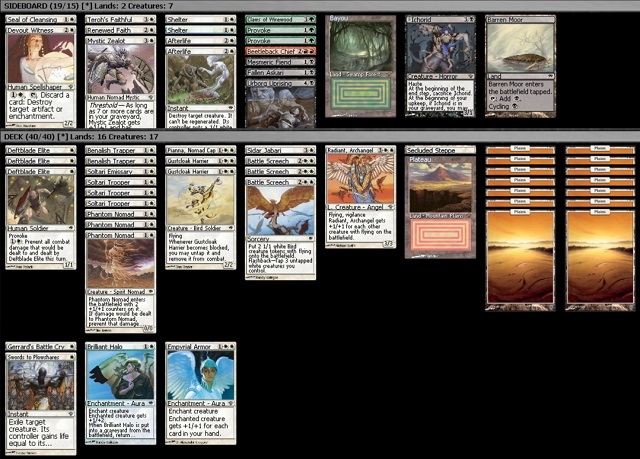
After playing with and against it a few times, it becomes very clear why Battle Screech was an uncommon.
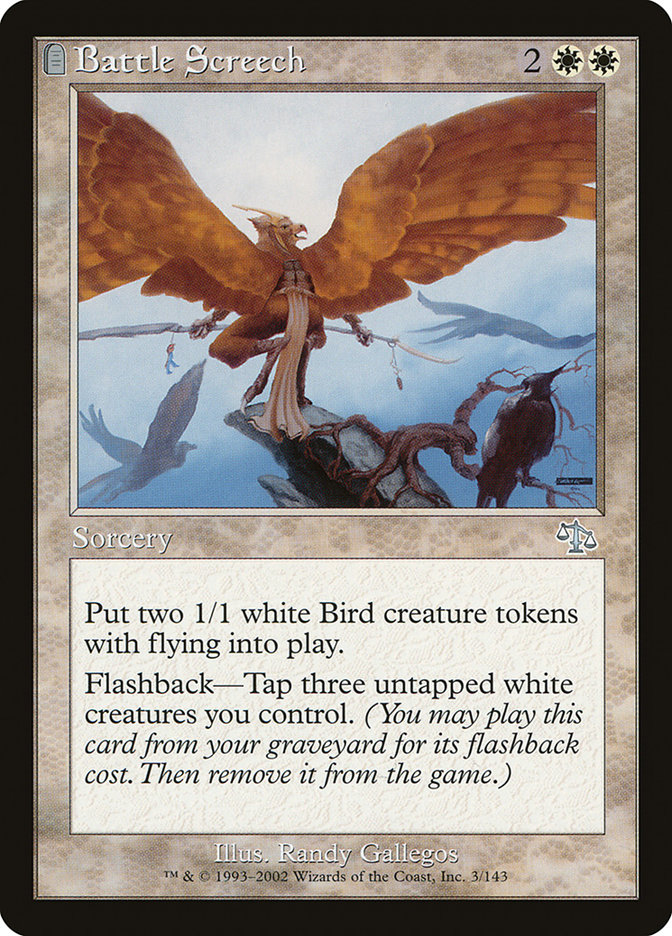
This is one of the best decks in the format, as multiple Battle Screeches are almost impossible to beat without a sweeper. The shadow guys are great at applying pressure, and the rares-turned-uncommons like Pianna, Nomad Captain; Sidar Jabari; and Radiant, Archangel are very very powerful.

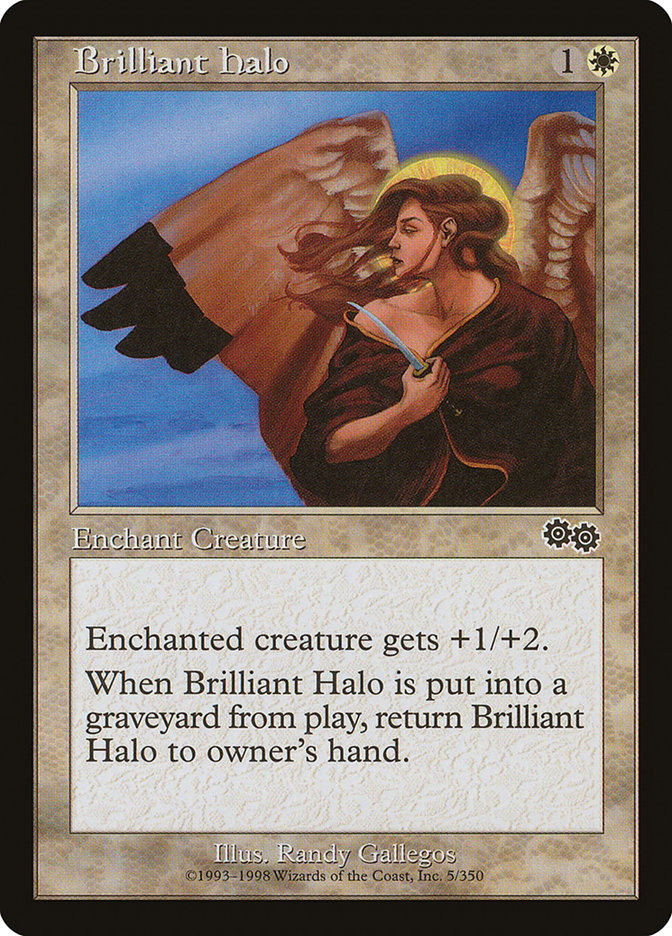
This deck also does a great job at assembling the potent combo of Deftblade Elite with a power boosting aura like Brilliant Halo or Empyrial Armor. This allows Deftblade to hunt down small creatures in the early game.
It’s also important to notice some of the cards that did not make the cut. Mystic Zealot was one of the best cards in my Astral Slide deck, but in this deck I won’t be getting Threshold reliably enough to even want him at all. Cards like Shelter are okay, but they don’t really fit my plan. I plan on having a bunch of small creatures swarming and hopefully avoiding combat with flying and shadow. I’m not looking to nickel and dime my opponent with incremental value but rather just finish ’em off quickly.
This deck easily cruised to a 3-0 and if it is open I highly recommend drafting it.
GW Enchantments – 3-0
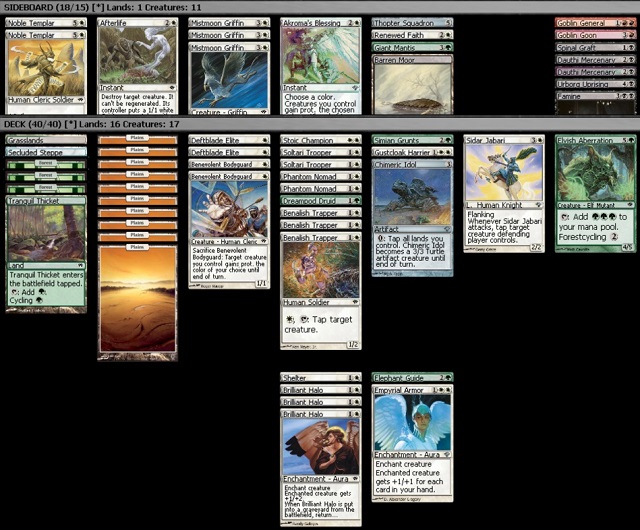
While somewhat similar to the last deck, the goal of this deck is a bit different. Rather than focusing on Battle Screech and fliers, this deck was to pants ’em up. Elephant Guide is another very powerful uncommon turned common, and it goes fantastically on Deftblade Elite. However, the heart of this deck is one of the more unassuming cards in the set:
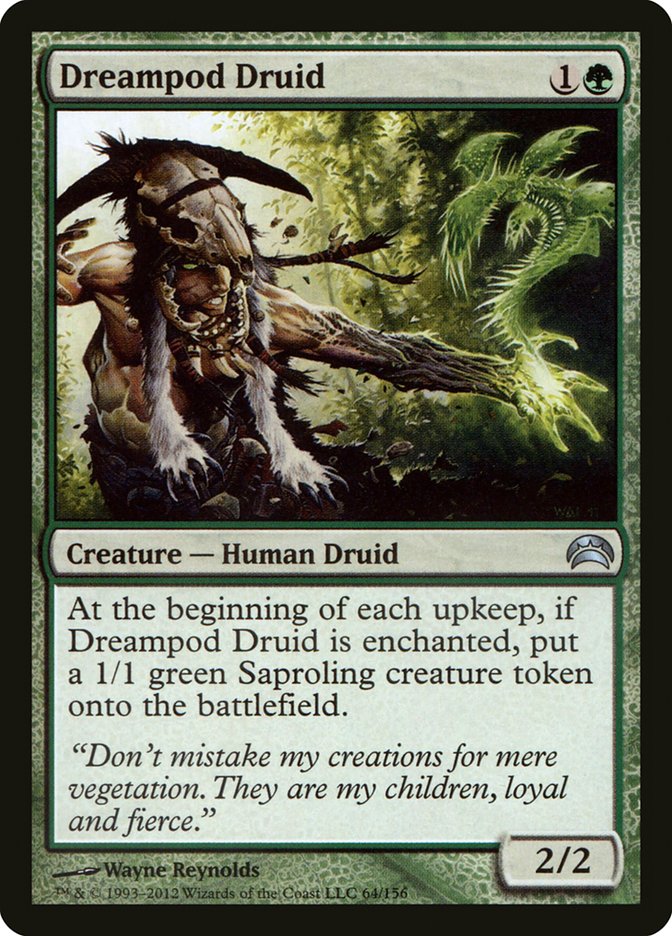
Having never played with the Commander sets, I didn’t even know Dreampod Druid existed so I completely glossed over it my first few drafts. This was a mistake. Dreampod Druid is insane, as a quick mini-Verdant Force is more than enough to take over a game.
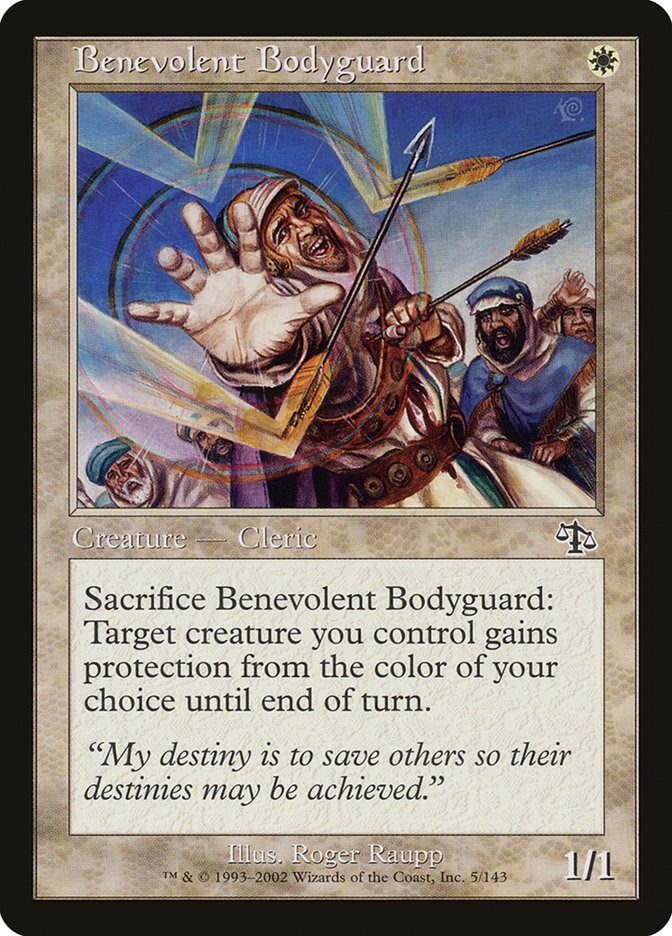
One of the more important cards in this deck is Benevolent Bodyguard. Only okay by itself, the Bodyguard does some major work making sure you don’t get blown out by a Man-O’-War or some other effect that could undo your aura work.
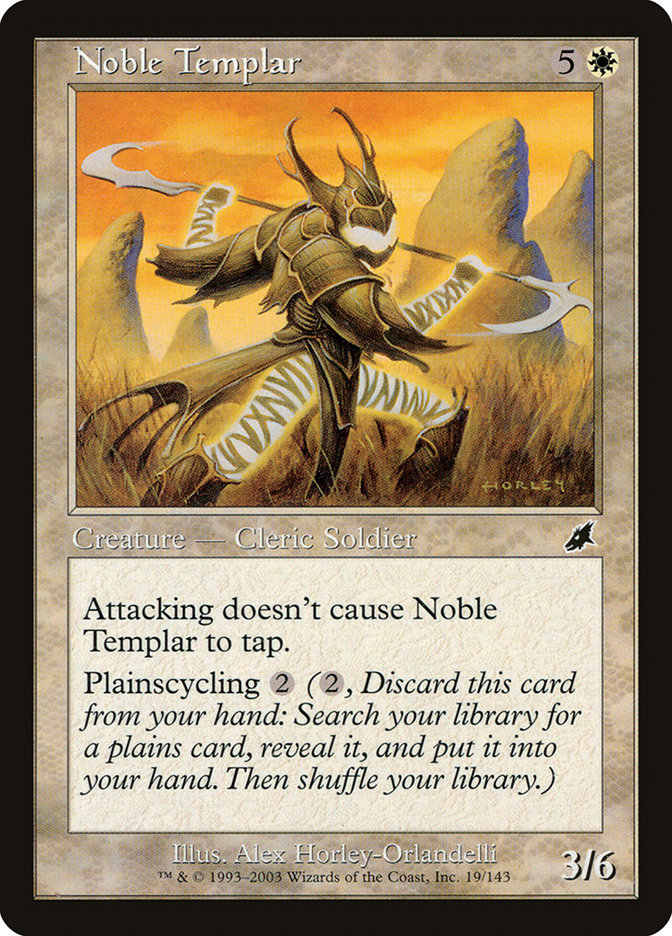
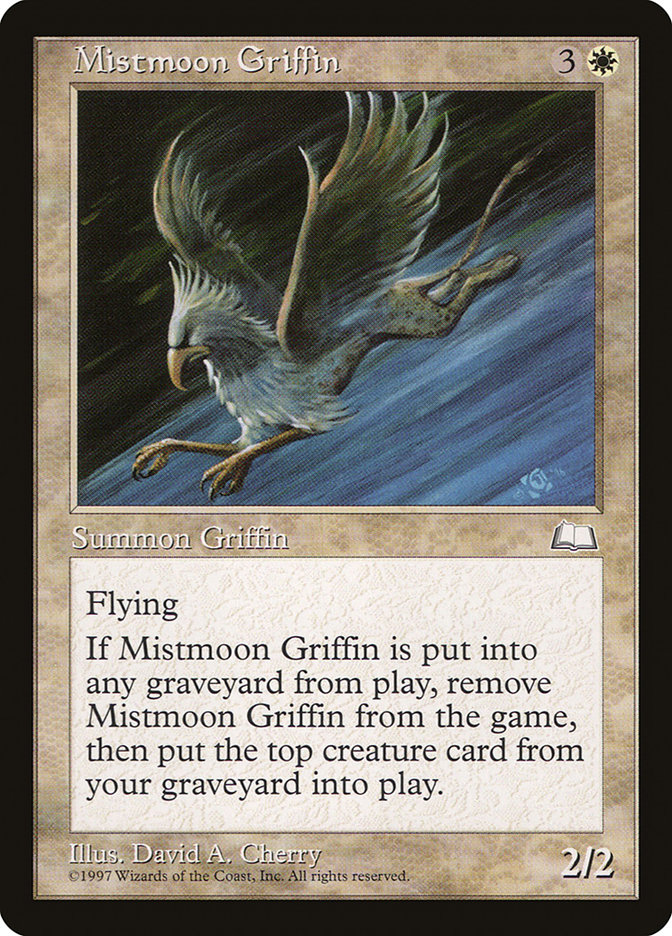
Also very cool was the sideboard plan I had with the deck. Mistmoon Griffin is a pretty sweet value card that has excellent synergy with the landcyclers, but it was ultimately too slow for the maindeck. However, against my opponent’s control deck with three mass removal spells in the finals (Starstorm, Nevinyrral’s Disk, and Crater Hellion), I was able to board into this little package and grind out the win.
Sideboards are very important in this format, as there are a lot of powerful cards you would only want against some decks.
BR Sligh – 1-1
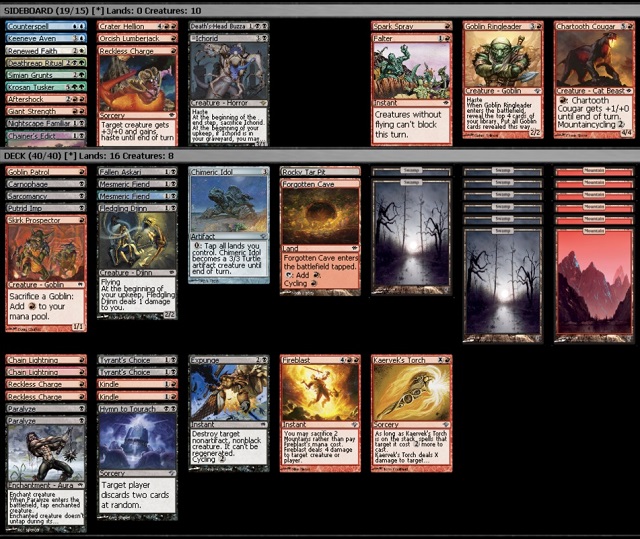
This deck was awesome, and sadly I ran into a very good UG Madness deck in round two and lost a close one.
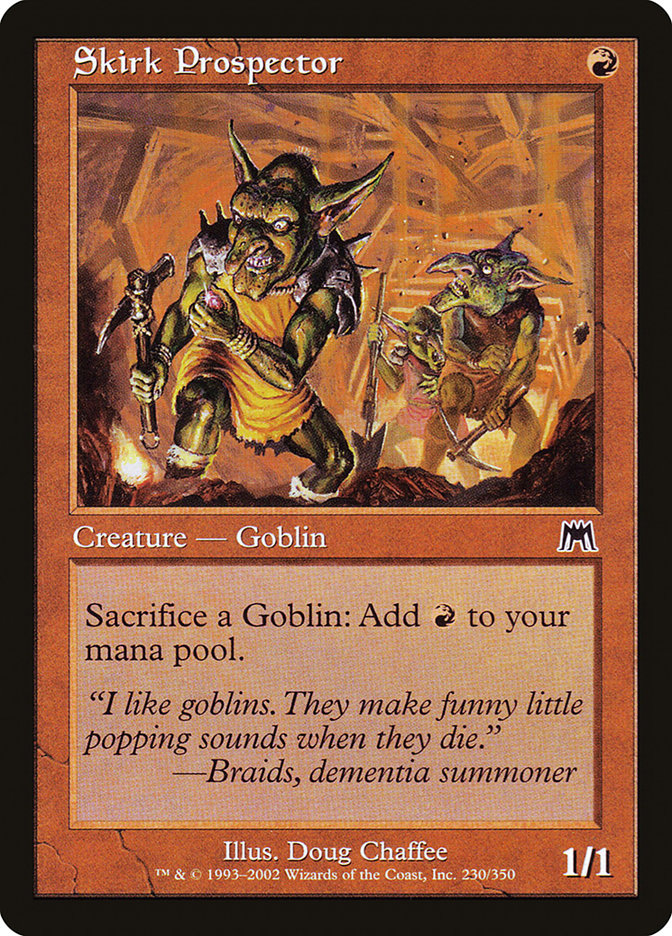
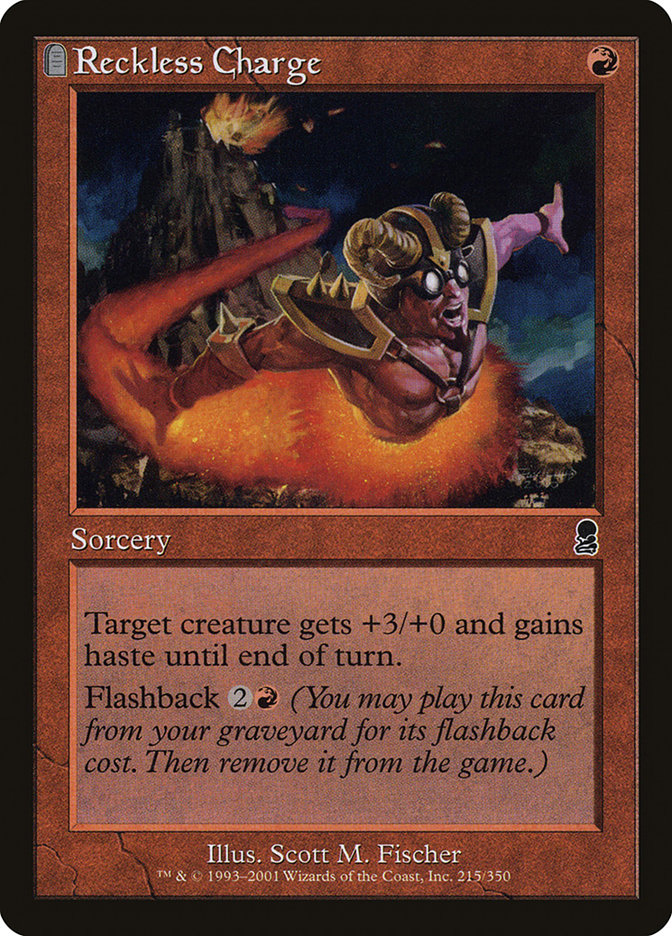
Again we see an example of the weak cards in the deck being more than the sum of their parts.
Skirk Prospector and Reckless Charge aren’t great cards, but in the deck they had a job to do and that job was to get in as much early damage as possible so I could finish them off with Tyrant’s Choice, Fireblast, Kindle, and Chain Lightning.
I wanted to keep my curve as low as possible, and mis-picked twice in this draft when I took Crater Hellion and Expunge over two-power black one-drops. The one-drops were so integral to my plan in conjunction with my Reckless Charges that the synergy between them really trumped almost everything else (barring another Fireblast or something).
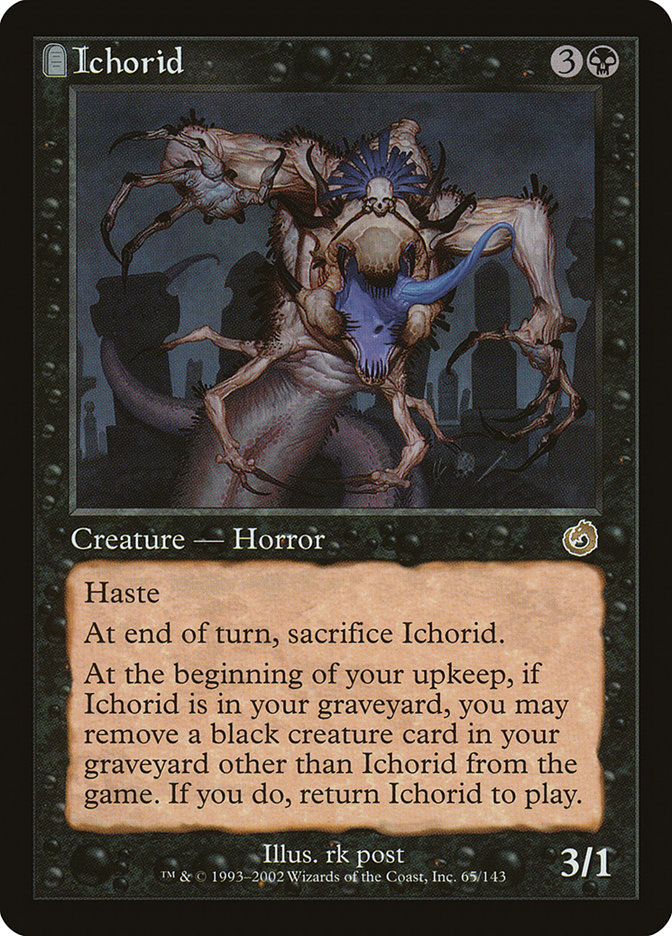
Also awesome was getting to board in Ichorid against my first round opponent’s control deck.
GR Fires – 3-0
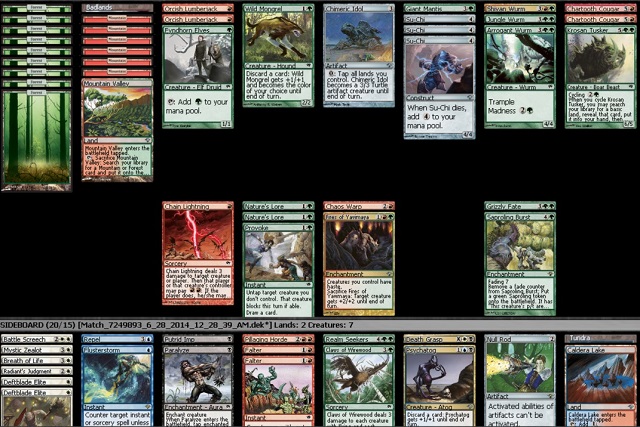
My last deck for the day was so much fun, as I got to put together a Fires of Yavimaya deck with ‘the fix’ in it: Fires of Yavimaya and Saproling Burst.
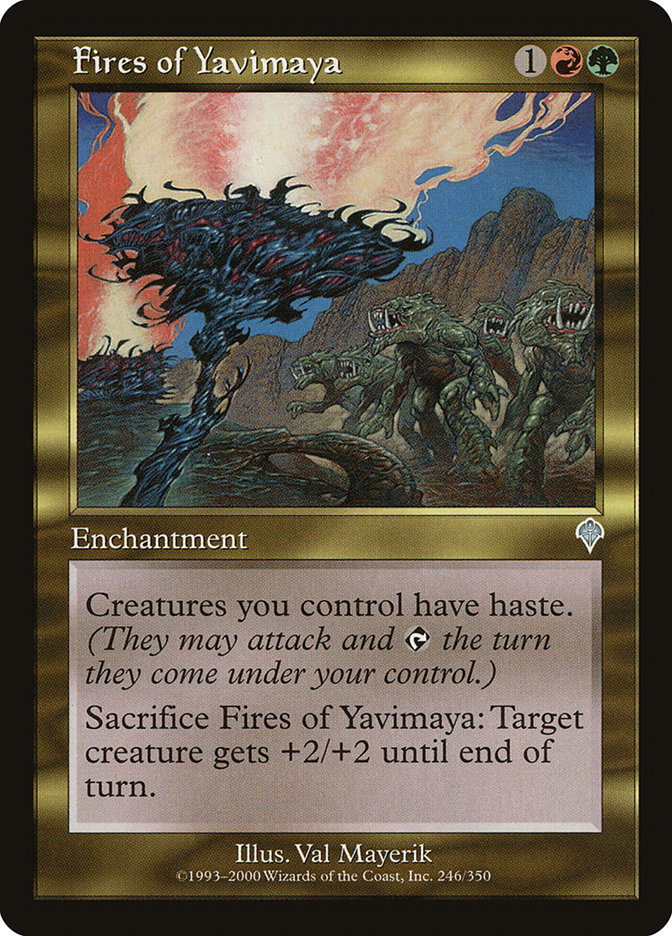
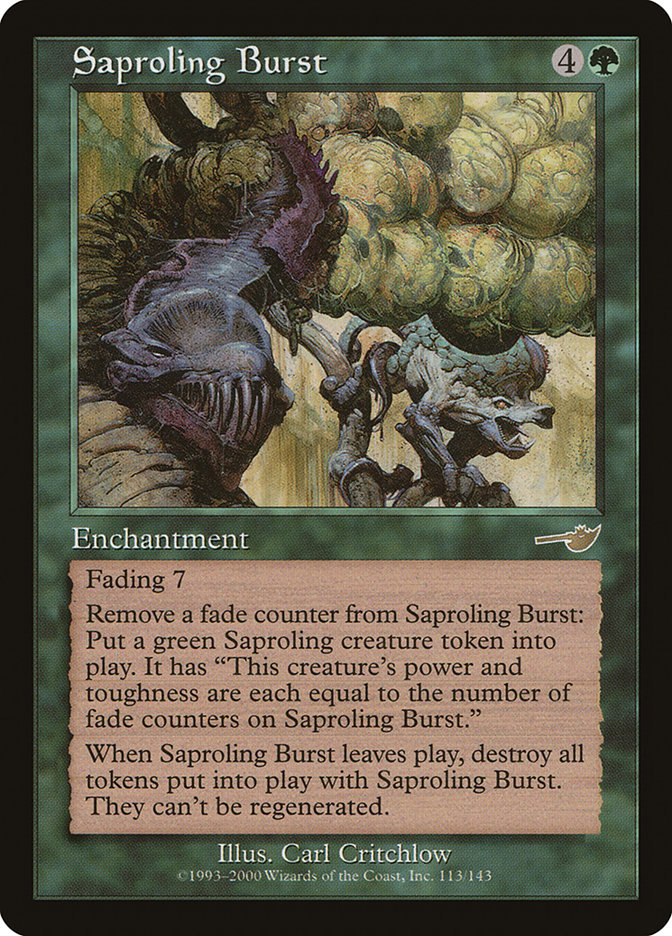
Filling out the rest of the deck was some ramp and a very solid aggressive core. Su-Chi is a very solid card in this format, as it manages to dodge many of the commonly-played removal spells while being a very easy to cast 4/4. Also not to be underestimated is just how good Wild Mongrel is. While we are spoiled today with how good creatures are, Wild Mongrel was the truth back in the day, and in Vintage Masters he is still the truth. He is very hard to kill with damage-based removal or cards like Exile and Expunge, hard to attack into and hard to block. And that’s even before you factor in Madness synergies.
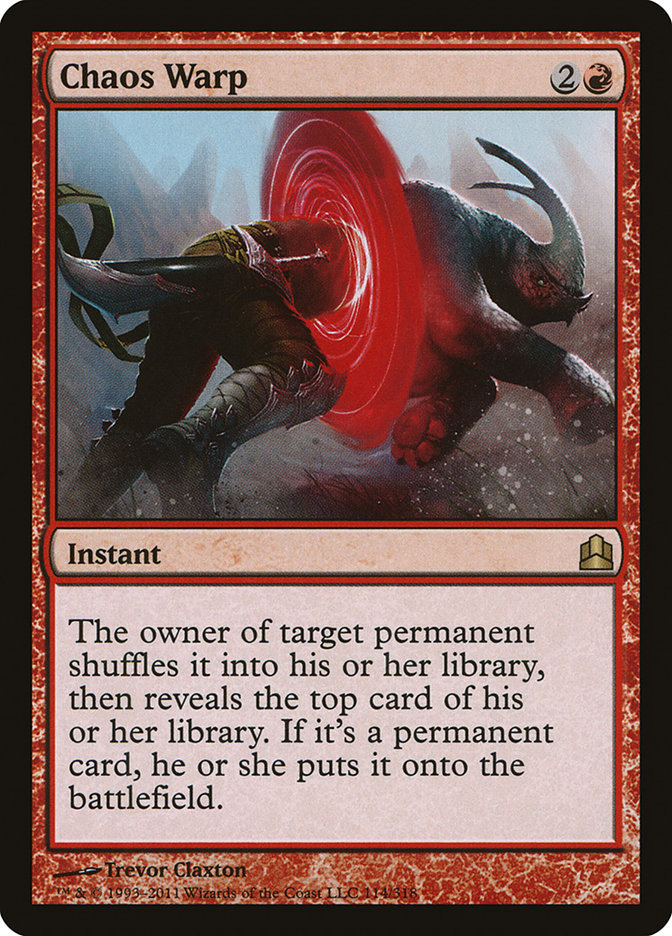
We also see Chaos Warp again, which is a card that has really grown on me. It is very often an instant-speed Vindicate that can handle all sorts of huge threats, and even when it hits something being able to cast it mid-combat is still a very powerful effect.
Wrap Up
Vintage Masters drafts are extremely fun, so make sure you get to play a few before they go down at the end of the summer.
Most importantly, when you are drafting, remember to ask yourself what your plan is… and what cards you need to execute that plan.
And please open some power! In twenty drafts I have only seen one piece – an Ancestral Recall from a UG Madness deck that I beat anyway with my RW Slide deck. I’m still waiting to open my first piece… maybe next draft!
